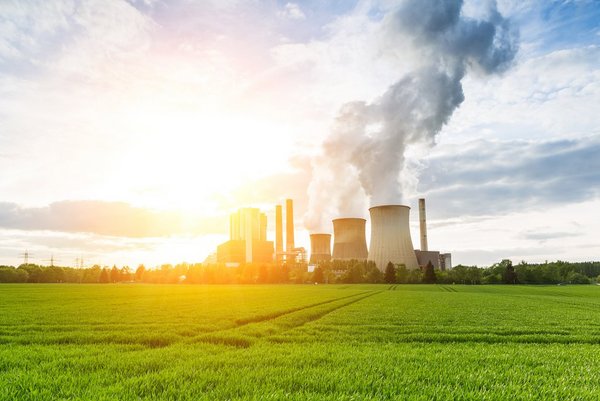 Read this article in French
Read this article in French- Share this article
- Subscribe to our newsletter
Greenhouse Gas concentrations hit record high
Global averaged concentrations of carbon dioxide (CO2), the most important greenhouse gas, in 2022 were a full 50 per cent above the pre-industrial era for the first time, the World Meteorological Organization (WMO) reports in November 2023. They continued to grow in 2023.
The rate of growth in CO2 concentrations was slightly lower than the previous year and the average for the decade, according to WMO’s Greenhouse Gas Bulletin. But it said this was most likely due to natural, short-term variations in the carbon cycle and that new emissions as a result of industrial activities continued to rise.
Methane concentrations also grew, and levels of nitrous oxide, the third main greenhouse gas, saw the highest year-on-year increase on record from 2021 to 2022, according to the Greenhouse Bulletin, which is published to inform the United Nations Climate Change negotiations, or COP28, in Dubai.
Just under half of CO2 emissions remain in the atmosphere. Slightly more than a quarter are absorbed by the ocean and just under 30 per cent by land ecosystems like forests – although there is considerable year-to-year variability in this. As long as emissions continue, CO2 will continue accumulating in the atmosphere, leading to global temperature rise. Given the long life of CO2, the temperature level already observed will persist for several decades even if emissions are rapidly reduced to net zero.
The last time the Earth experienced a comparable concentration of CO2 was three to five million years ago, when the temperature was 2-3°C warmer and sea level was 10-20 metres higher than now.
Greenhouse gas concentrations in 2022
The (NOAA) Annual Greenhouse Gas Index (AGGI) shows that from 1990 to 2022, the warming effect on our climate – called radiative forcing – by long-lived greenhouse gases increased by 49 per cent, with CO2 accounting for about 78 per cent of this increase. CO2 is responsible for approximately 64 per cent of the warming effect on the climate, mainly because of fossil fuel combustion and cement production.
The 2.2 parts per million (ppm) increase in the annual average from 2021 to 2022 was slightly smaller than from 2020 to 2021 and for the past decade (2.46 ppm yr). The most likely reason is increased absorption of atmospheric CO2 by terrestrial ecosystems and the ocean after several years with a La Niña event. The development of an El Niño event in 2023 may therefore have consequences for greenhouse gas concentrations.
60 per cent of methane is emitted by anthropogenic sources
Methane is a powerful greenhouse gas which remains in the atmosphere for about a decade. Methane accounts for about 19 per cent of the warming effect of long-lived greenhouse gases.
Approximately 40 per cent of methane is emitted into the atmosphere by natural sources (for example, wetlands and termites), and around 60 per cent comes from anthropogenic sources (for example, ruminants, rice agriculture, fossil fuel exploitation, landfills and biomass burning).
The increase from 2021 to 2022 was slightly lower than the record rate observed from 2020 to 2021, but considerably higher than the average annual growth rate over the last decade.
Rising nitrous oxide emissions
Nitrous oxide is both a powerful greenhouse gas and an ozone-depleting chemical. It accounts for about 7 per cent of the radiative forcing by long-lived greenhouse gases.
N2O is emitted into the atmosphere from both natural sources (approximately 60 per cent) and anthropogenic sources (roughly 40 per cent), including oceans, soils, biomass burning, fertiliser use, and various industrial processes.
For N2O, the increase from 2021 to 2022 was higher than that observed any time before in our modern time record.
(WMO/ile)
Read more on the WMO website





Add a comment
Be the First to Comment